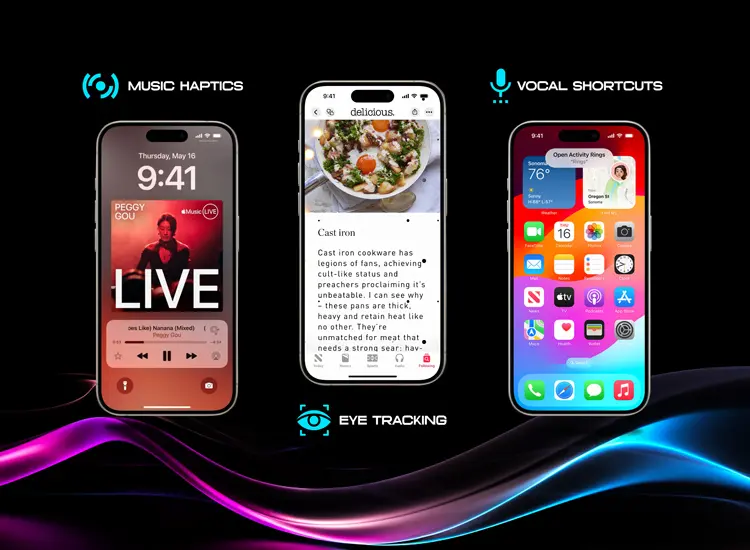Apple has once again improved the accessibility field with its latest special features. These new set of enhancements including Eye Tracking, Music Haptics, and Vocal Shortcuts are designed to enhance the user experience for people with disabilities. These are integrated into iOS 18 and they guarantee Apple's dedication to innovation and inclusivity. Based on the official website, these advancements will redefine how users interact with their devices. In the following, we are going to cover these new accessibility features:
Apple's Eye Tracking: A New Era of Interaction
What is Eye Tracking?
Eye Tracking is a cutting-edge technology that is going to allow users to control their new Apple devices using only their eyes. This feature is greatly beneficial for individuals with limited mobility and will offer them a seamless and intuitive way to navigate their devices.
How Does Eye Tracking Work?
The Eye Tracking in iOS 18 uses advanced sensors and cameras in the iPhone 16 to detect the user's eye movements. Users can perform various actions such as selecting apps, typing messages, and more by simply looking at specific points on the screen. This technology reduces the need for physical touch and will make device interaction more accessible for everyone.
Eye Tracking Benefits
Eye Tracking can significantly impact various aspects of daily life. For example users can compose emails or text messages easily, navigate social media apps and even control smart home devices, all with simple eye movements. Also, this feature offers new possibilities in gaming and it might allow players to engage in a more immersive and hands-free gaming experience. Moreover, Eye Tracking can be a game-changer in professional settings because it enables users to manage presentations or conduct research without the need for traditional input devices.
Apple’s Music Haptics: Feel the Beat
What is Music Haptic?
Music Haptics is another innovative feature introduced by Apple in iOS 18 and the iPhone 16. This technology is going to allow users to feel the rhythm and beats of their music through vibrations. It enhances the musical experience especially for people who are deaf or hard of hearing.
How Does Music Haptics Work?
Music Haptics works by converting audio signals into haptic feedback. When users play music on their devices, the technology translates the sound waves into vibrations and by doing this, it can be felt through the device. This feature will make music more accessible and add a new dimension to the overall listening experience.
Music Haptics Benefits
Music Haptics offers a new way to experience and enjoy music for those with hearing impairments. The ability to feel the music can create a deeper connection and appreciation for musical compositions. In addition, this feature can be beneficial in educational settings too and students with hearing problems can engage more fully in music classes and activities.

Apple Vocal Shortcuts: Voice-Activated Control
What is “Vocal Shortcuts”?
Vocal Shortcuts is a powerful addition to Apple's accessibility features in iOS 18 that enables users to control their iPhones by using voice commands. This feature is especially useful for individuals with motor impairments and it provides them with a hands-free way to interact with their devices.
How Does Vocal Shortcuts Work?
Vocal Shortcuts is a feature that allows users to customize voice commands for a number of actions like sending messages, opening apps and changing settings. This makes use of Apple's advanced voice recognition technology to interpret and carry out user commands precisely. Also it guarantees a seamless and effective user experience.
Vocal Shortcuts Benefits
Vocal Shortcuts is going to greatly enhance everyday tasks and make it easier for users to stay organized and connected. For example, users can set reminders, check the weather, or control smart home devices without lifting a finger. This hands-free approach increases convenience and also promotes independence for people with disabilities.
Conclusion
In the field of accessibility, Apple's release of iOS 18 and the iPhone 16 with Eye Tracking, Music Haptics, and Vocal Shortcuts will represent a major turning point. Apple's dedication to allowing all users is reflected in these features, which are intended to make device interaction easier and straightforward. With the release of these technologies, people with disabilities will be able to interact with their gadgets in a whole new way, increasing accessibility to the digital world.